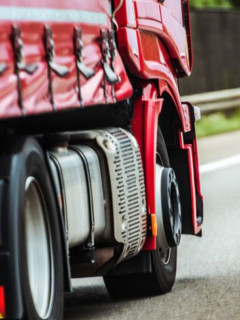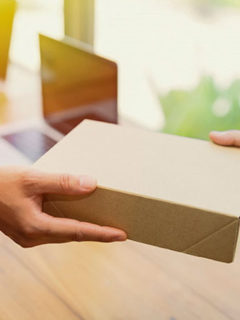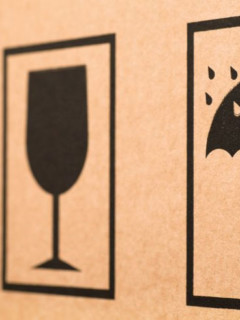What packaging is in your neighbourhood or lying around? Probably of very different materials: plastic, wood, cardboard, metal, etc. Now, is one better for the environment than the other? To know that, we need to determine what actually makes a packaging ‘sustainable’. Lucky for you, you don’t have to go far to find the answer to that question. Simply reading on below will suffice.
Five basic principles for sustainable packaging
Before we get started, we need to make an important note: any packaging in itself implies a piece of sustainability. Because thanks to packaging…
- (fresh) products last longer,
- a product is better protected against damage during transport.
What can we conclude? Packaging ensures that our final product lasts longer and is shipped safely. So packaging in itself is good. However, the question is how we package and what materials we use. These 5 basic principles will help us with that:

► 1. Reduce
One way a packaging is sustainable is when it is light and/or compact. This reduces the amount of material used and reduces CO2 emissions. Moreover, more parcels can then fit into a courier service’s delivery van. It is to be expected that in future, courier services will take into account the volume of a package in addition to its weight. This will then translate into a new calculation of shipping rates. With a few exceptions, we are not that far along today. Some examples of compact packaging solutions:
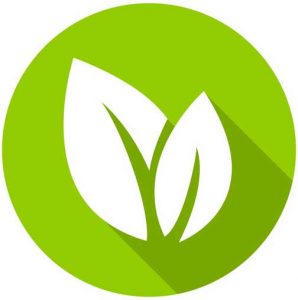 Box with variable height
Box with variable height
The variable-height box is unique in that it features flaps with crease lines. These can be cut and folded every 1 or 2.5 cm. This allows you to easily adapt the box to the size of your product. It is especially handy if you ship goods that differ slightly from each other in size. Result? More compact boxes with less filling material and less tape.
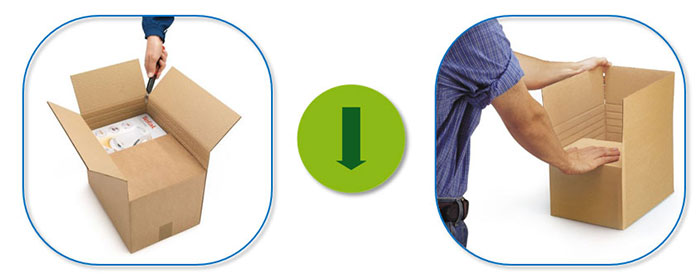
 Tailor-made packaging
Tailor-made packaging
The most effective way to keep a package compact is to tailor it completely to your product. There are simple solutions for that too. Examples include bottle boxes, book packs or shipping bags. The latter are especially popular for shipping clothes and textiles. They close perfectly around your product and often require no additional padding material.
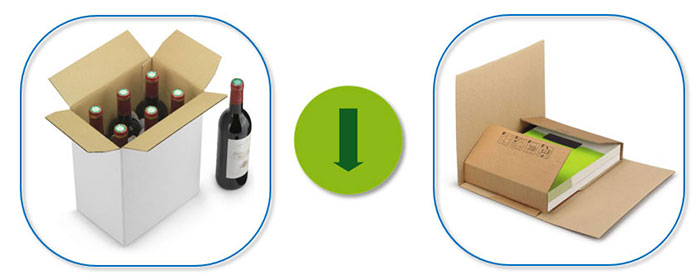
► 2. Reuse
Sustainability is often mentioned in the same breath as reusability. Packaging is reusable when you can give it a new life unprocessed, preferably as often as possible. Less copies of reusable packaging need to be produced. As a result, we need fewer raw materials and less waste is produced. In other words, reusable products have the least impact on the environment. Here are some examples:
 Polypropylene carrier bag
Polypropylene carrier bag
The European Directive 2015/720 requires carrier bags to be reusable. To be reusable, a plastic carrier bag must have a wall thickness of at least 50 microns. As a result, the light bags that a consumer got in the supermarket are already disappearing from the street scene. A good alternative to those light bags is the woven polypropylene carrier bag. It is super strong and can be reused up to 400 times. Still other strong carrier bags are made of polyester, jute or cotton.
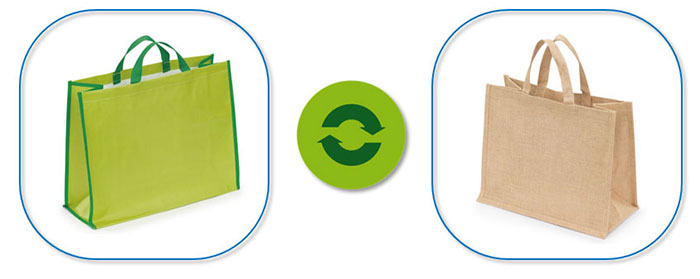
 Courier box and plastic pallet
Courier box and plastic pallet
Transporting your goods can be done in so many ways… One of the best reusable solutions is the courier box. It is mainly used by companies that want to ship their products ‘internally’, i.e. to and from their shops or other branches. The courier bin is made of polypropylene. This makes it not only strong, but also light. Once unloaded, the courier bins can be pushed together, taking up minimal space.
Another example is the plastic pallet. It too can easily be reused a greater number of times unlike cardboard or wood fibre variants. It is also much lighter than standard wooden pallets. So that equals less CO2 emissions during transport.
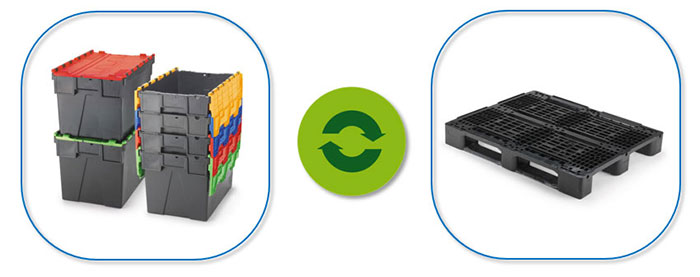
► 3. Replace
]Thirdly, we need to be aware that there are sustainable alternatives for almost every packaging material. These may be products that are fully or partially recyclable, which may be made from recycled materials or renewable raw materials. Some examples of replaceable solutions with growing popularity are:



► 4. Renew
Renewable packaging is made from raw materials of 100% organic origin. They are ‘renewable’ as nature can continue to supply them to us almost indefinitely. Paper and cardboard are well-known examples. Thanks to sustainable forest management, wood (the raw material of paper) can be renewed endlessly. Other examples of such renewable resources are:
 Bamboo and vegetable starch
Bamboo and vegetable starch
As an alternative to disposable plastics, people often use bamboo or starch. These materials naturally break down easily in the environment because they are of plant origin. Common applications are pea-based padding chips or potato starch-based airfoil.
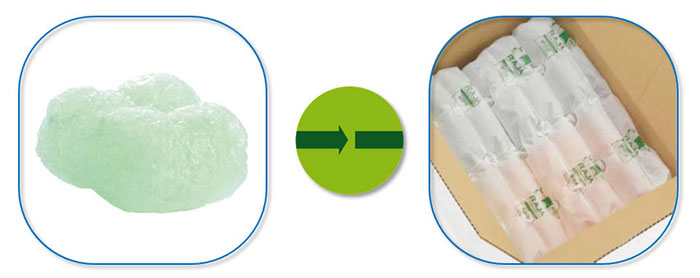
 Bio-based plastics
Bio-based plastics
Biobased plastics, according to the European standard EN16575, are plastics made wholly or partly from biomass. The properties of bioplastics have improved significantly in recent years and can compete with conventional plastics in terms of flexibility, printability, transparency, etc.
A well-known form of a bio-based plastic is PLA (PolyLactic Acid or polylactic acid). It is a material suitable for packaging and is made from mainly maize starch. It is used for making cutlery, dishes and as a coating in cardboard cups, among other things.
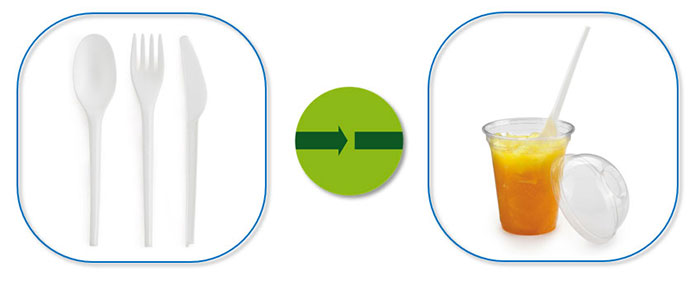
► 5. Recycle
A final factor that can determine whether packaging is sustainable is the extent to which you can recycle it. The importance of recycling also translates into EU policy. It is pushing for a circular economy: today’s waste should become tomorrow’s raw materials.
Those who want to recycle will first have to sort. To facilitate that process for consumers, it is advisable to pack with mono-materials. That means using one type of raw material for all parts of the packaging (= paper, plastic, glass, wood, etc.). Everything may then enter the same sorting cycle at once. Concrete examples are:
 Paper or cardboard packaging
Paper or cardboard packaging
Paper and cardboard are one of the most recycled materials in Europe. In the Netherlands, it is estimated that up to 87% of all paper and cardboard would be collected for recycling. Packaging using paper as a mono-material could look as follows:
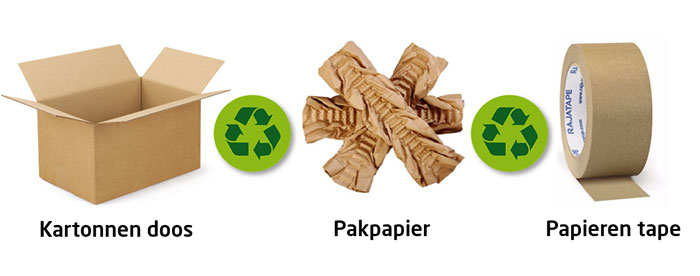
 Plastic packaging
Plastic packaging
For some applications, it is better and more environmentally friendly to opt for all-plastic packaging. Plastic is easily recyclable. Something that is already well followed especially within companies. If you want to use plastic as a mono-material, you quickly end up with shipping bags, trays or blister packs. Do you combine different types of plastic in one package? Then make sure the components can still be easily separated. Different types of plastic often require different recycling processes.
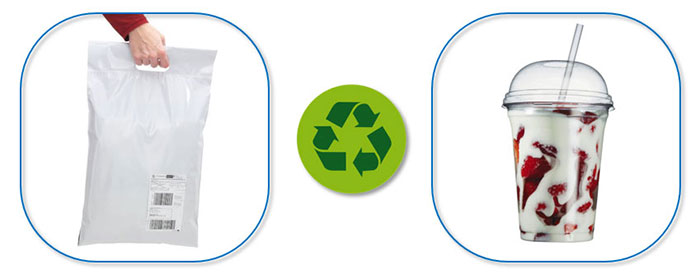
The future of plastic will be determined by the sorting process. The more efficiently we separate the different types of plastic, the more plastic we can recycle and put to a new use. After all, plastic still remains one of the best and most often recyclable wastes.











